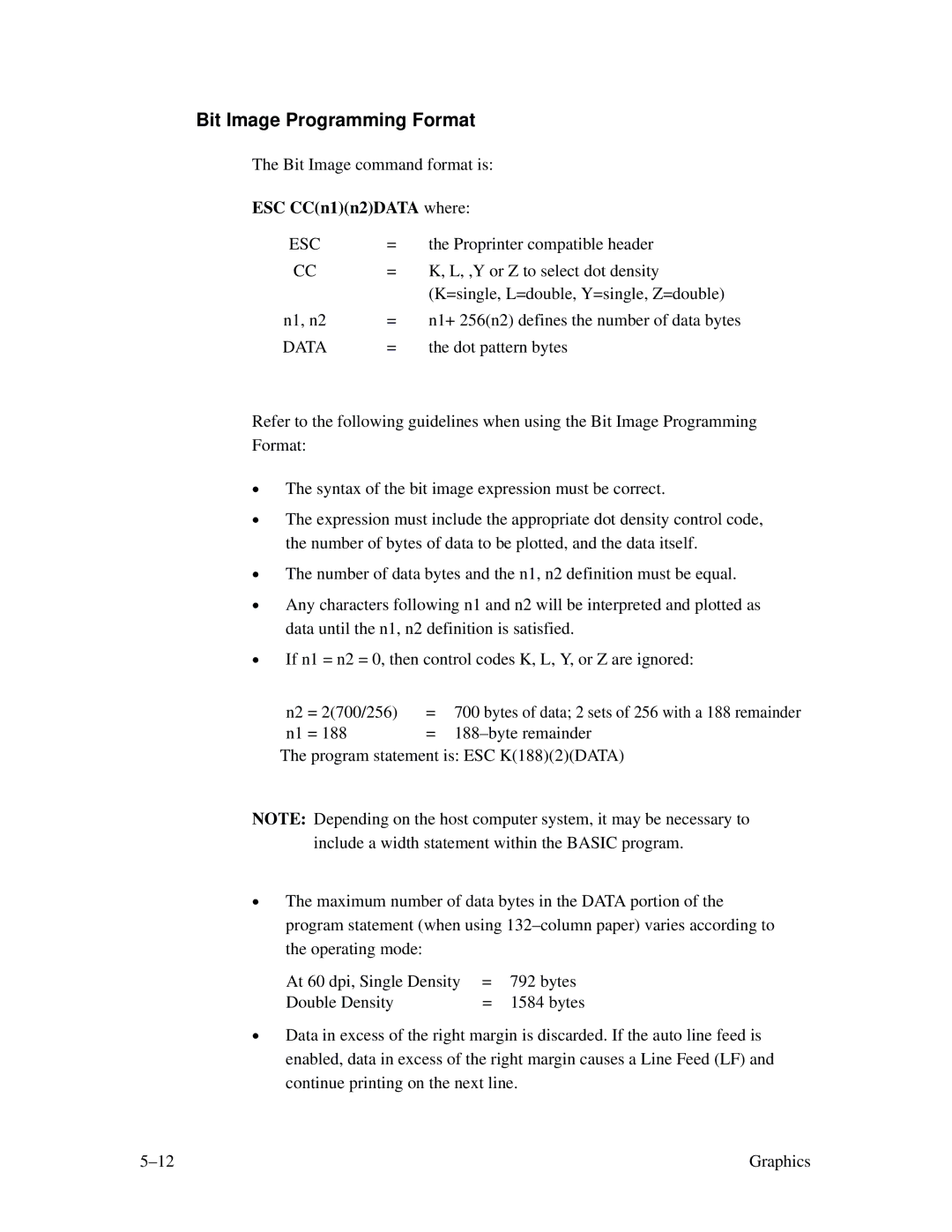Bit Image Programming Format
The Bit Image command format is:
ESC CC(n1)(n2)DATA where:
ESC | = | the Proprinter compatible header |
CC= K, L, ,Y or Z to select dot density (K=single, L=double, Y=single, Z=double)
n1, n2 | = | n1+ 256(n2) defines the number of data bytes |
DATA | = | the dot pattern bytes |
Refer to the following guidelines when using the Bit Image Programming Format:
•The syntax of the bit image expression must be correct.
•The expression must include the appropriate dot density control code, the number of bytes of data to be plotted, and the data itself.
•The number of data bytes and the n1, n2 definition must be equal.
•Any characters following n1 and n2 will be interpreted and plotted as data until the n1, n2 definition is satisfied.
•If n1 = n2 = 0, then control codes K, L, Y, or Z are ignored:
n2 | = 2(700/256) | = | 700 bytes of data; 2 sets of 256 with a 188 remainder |
n1 | = 188 | = |
The program statement is: ESC K(188)(2)(DATA)
NOTE: Depending on the host computer system, it may be necessary to include a width statement within the BASIC program.
•The maximum number of data bytes in the DATA portion of the program statement (when using
At 60 dpi, Single Density | = | 792 bytes |
Double Density | = | 1584 bytes |
•Data in excess of the right margin is discarded. If the auto line feed is enabled, data in excess of the right margin causes a Line Feed (LF) and continue printing on the next line.
Graphics |
